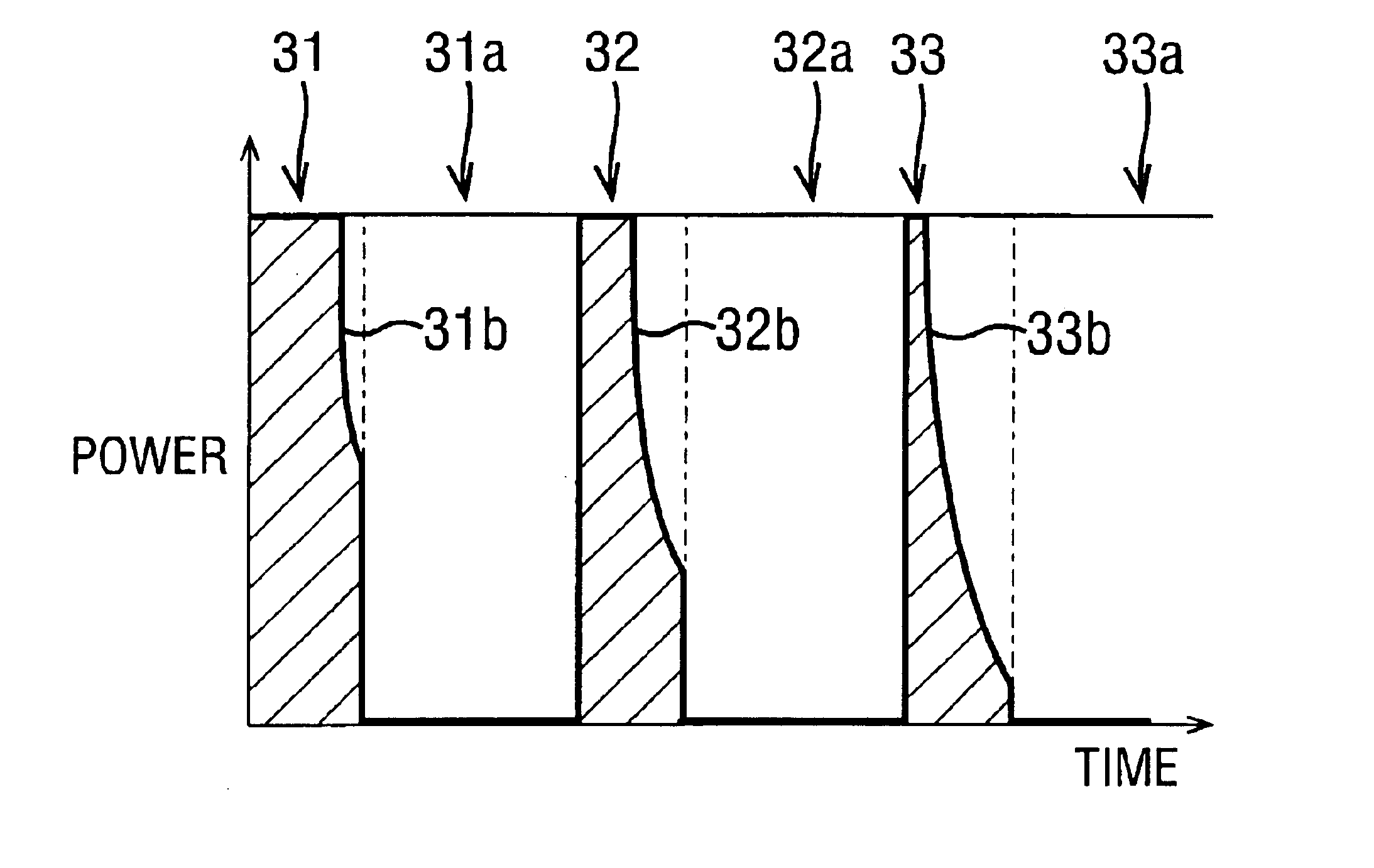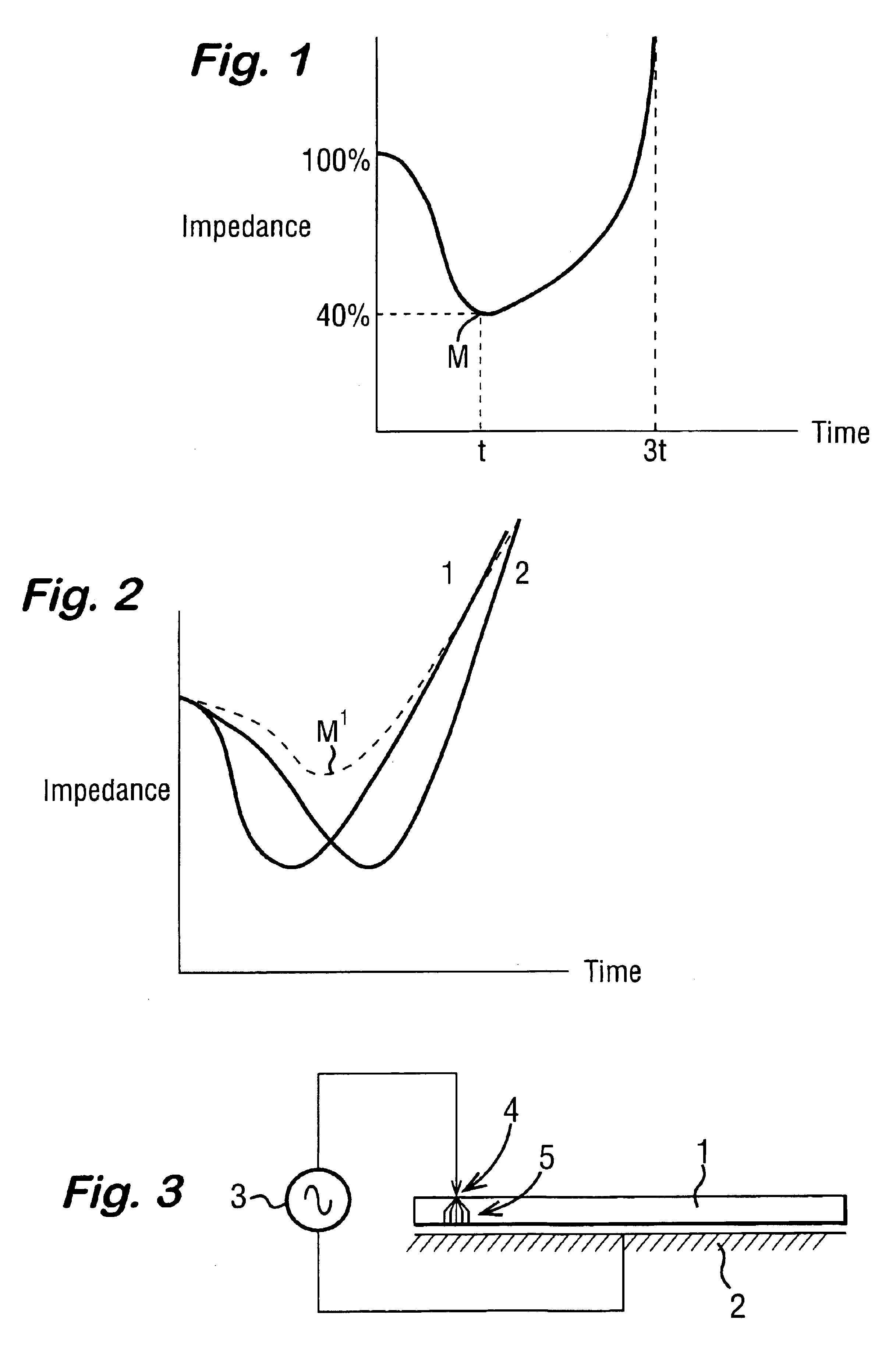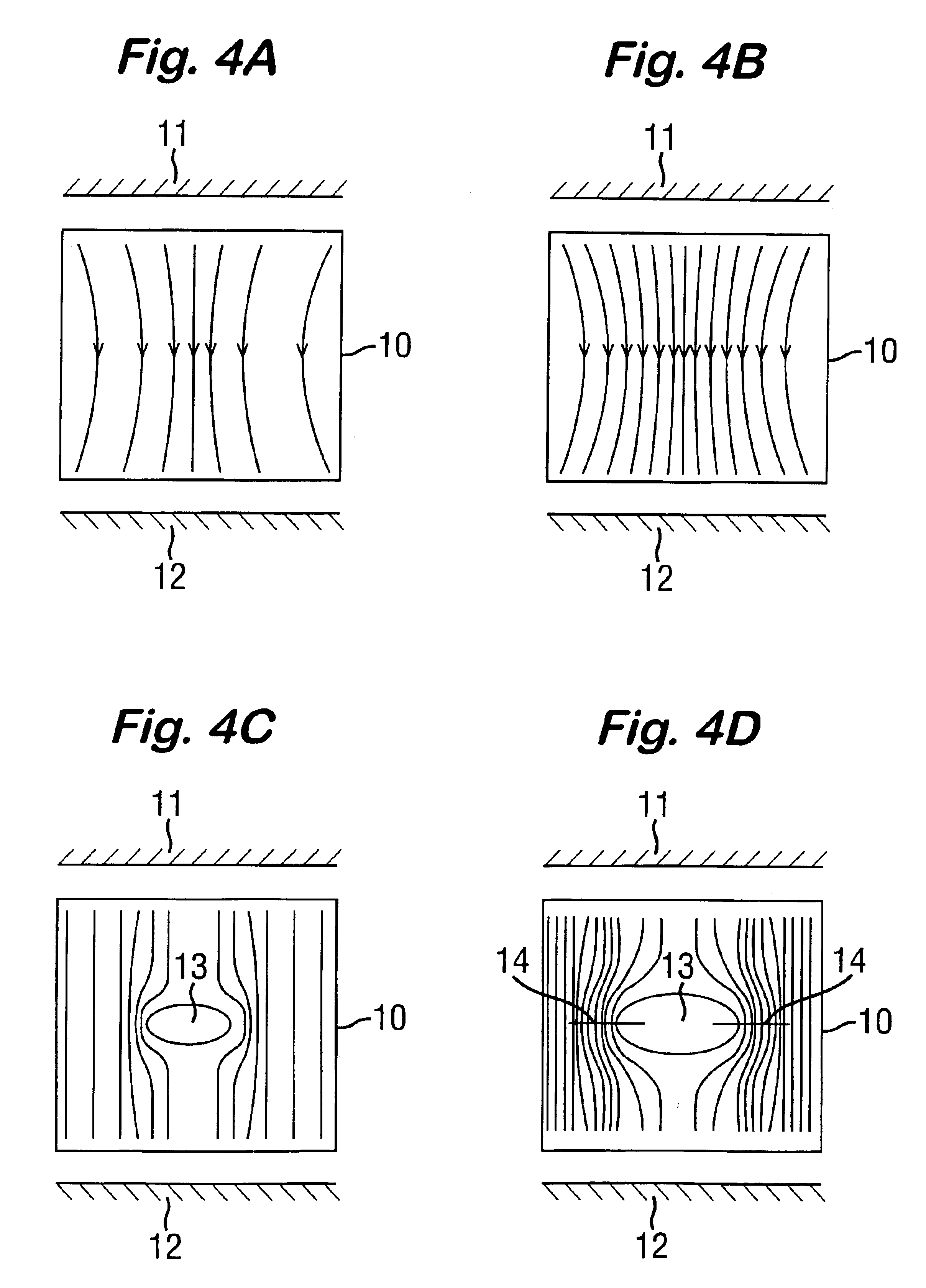Electrosurgical system
a technology of electrosurgical system and electrosurgical method, which is applied in the field of electrosurgical system, can solve the problems of increasing the risk of forceps jaws being stuck to the tissue, damage to untreated areas of the vessel, and excessive spread of coagulation to adjacent tissues, so as to reduce the risk of tissue sticking, effective giving ptcr characteristics, and increasing impedance
- Summary
- Abstract
- Description
- Claims
- Application Information
AI Technical Summary
Benefits of technology
Problems solved by technology
Method used
Image
Examples
Embodiment Construction
[0048]Referring to the drawings, FIG. 1 is a graph showing the ideal behaviour of tissue impedance against time during the application of bipolar r.f. energy. The impedance is seen to fall during the initial phase of application as a result of heating of electrolytes in the vicinity of the tissue being treated. A minimum M is reached, following which the impedance begins to rise as the tissue is desiccated and becomes less conductive. Treatment, in terms of coagulation of the tissue, optimally occurs around the point M of minimum impedance. Continued delivery of energy beyond this point M merely serves to increase the lateral margin, to increase the temperature of the application electrodes, typically a pair of forceps jaws, due to increased steam generation and to increase the risk of tissue sticking. Increased ion mobility can cause a 60% impedance reduction over a typical temperature change of 37° C. to 100° C. In practice, however, a 60% reduction is never seen since the tissue ...
PUM
 Login to View More
Login to View More Abstract
Description
Claims
Application Information
 Login to View More
Login to View More - R&D
- Intellectual Property
- Life Sciences
- Materials
- Tech Scout
- Unparalleled Data Quality
- Higher Quality Content
- 60% Fewer Hallucinations
Browse by: Latest US Patents, China's latest patents, Technical Efficacy Thesaurus, Application Domain, Technology Topic, Popular Technical Reports.
© 2025 PatSnap. All rights reserved.Legal|Privacy policy|Modern Slavery Act Transparency Statement|Sitemap|About US| Contact US: help@patsnap.com



